Gourmet Grains: Men’s Guide to Healthy Carbs
Gourmet grains offer a wide range of health benefits, making them an essential component of a nutritious diet, especially for men.
Understanding the importance of gourmet grains and their impact on men’s health is crucial to making informed dietary choices.
Healthy carbs, which are found in gourmet grains, provide essential nutrients and energy that men need for optimal performance and overall well-being.
In this guide to healthy carbs for men, we will explore the reasons why gourmet grains are important, the various types of gourmet grains available, their nutritional benefits, ways to incorporate them into a healthy diet, and tips for buying and cooking gourmet grains.
By the end of this article, you will have a comprehensive understanding of gourmet grains and their significant role in supporting men’s health and wellness.

Key Takeaways:
- Gourmet grains offer health benefits: Gourmet grains, such as quinoa, farro, amaranth, barley, millet, and teff, provide a rich source of healthy carbs and nutrients, which are essential for men’s health.
- Incorporating gourmet grains promotes a healthy diet: Including gourmet grains in your meals can enhance the nutritional value of your diet. They can be used in various delicious recipes, making it easier to adopt a healthy eating plan.
- Tips for buying and cooking gourmet grains: To make the most of gourmet grains, it’s important to choose and store them properly. Understanding different cooking methods for these grains can help in preparing them to perfection.
Why are Gourmet Grains Important for Men’s Health?
Gourmet grains are important for men’s health because of their nutritional value and health benefits. Men should incorporate gourmet grains into their diet for several reasons.
Firstly, gourmet grains are rich in essential nutrients like fiber, vitamins, minerals, and antioxidants. These nutrients are crucial for maintaining good health and preventing diseases.
Secondly, gourmet grains like quinoa and barley have heart-healthy properties. They lower cholesterol levels and promote healthy blood pressure, reducing the risk of cardiovascular diseases.
Thirdly, gourmet grains such as farro and wild rice are excellent choices for weight management. They are low in calories, high in fiber, keep you full, and prevent overeating.
Gourmet grains provide steady energy due to complex carbohydrates. They are ideal for active men and improve athletic performance.
Lastly, gourmet grains contain prebiotic fibers that nourish beneficial gut bacteria, promoting a healthy digestive system. This improves digestion, nutrient absorption, and strengthens the immune system.
Incorporating gourmet grains into your diet can have significant positive impacts on men’s health. Enjoy their unique flavors while reaping the nutritional benefits. Consult a healthcare professional or nutritionist for personalized guidance and to ensure gourmet grains align with your specific health needs.
What are Healthy Carbs?
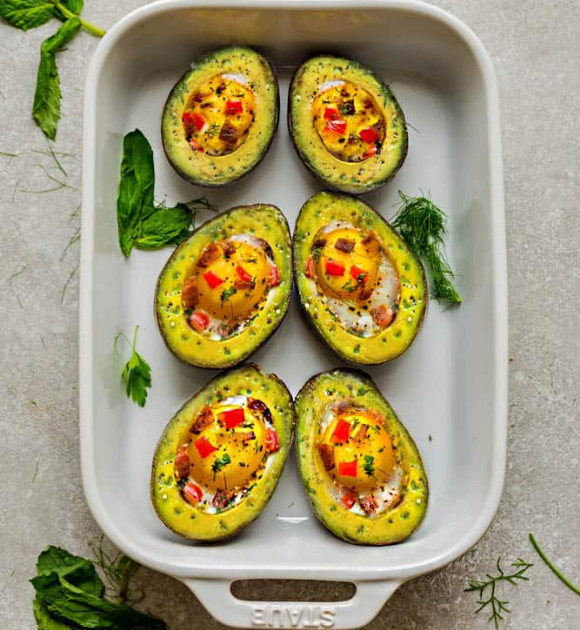
Photo Credits @ketochefnz
When it comes to carbohydrates, it is important to understand what are healthy carbs. Healthy carbs are complex carbohydrates rich in fiber and essential nutrients. They are found in whole grains, fruits, vegetables, and legumes.
Healthy carbs have high fiber content. Fiber aids digestion, regulates blood sugar levels, keeps you fuller for longer, and prevents spikes in insulin levels. These carbs are also low in refined sugars and processed grains, making them a healthier choice for overall well-being.
Incorporating healthy carbs into your diet has numerous benefits. They provide steady energy for sustained physical and mental performance. Unlike simple carbs, healthy carbs provide a more stable and consistent source of energy and don’t cause energy crashes.
Healthy carbs are rich in vitamins, minerals, and antioxidants. They support a strong immune system, promote heart health, and contribute to overall vitality. By consuming a variety of healthy carbs, you can ensure you get a wide range of essential nutrients for your body.
When choosing healthy carbs, look for whole grains like quinoa, farro, amaranth, barley, millet, or teff. These grains are packed with nutrients and fiber. Read labels and choose minimally processed products free from added sugars and artificial ingredients.
By incorporating healthy carbs into your diet, you can fuel your body with the nutrients it needs to thrive. Remember to consume them in moderation as part of a balanced and varied diet for optimal health.
Why Do Men Need Healthy Carbs?

Photo Credits @ketochefnz
Men need healthy carbs for several reasons. They play a crucial role in maintaining overall health and well-being. Here are some reasons why men should prioritize healthy carbs:
1. Energy production: Healthy carbs provide the body with the energy it needs for daily activities, exercise, and physical performance. Carbohydrates break down into glucose, the primary source of energy for the body.
2. Brain function: Glucose from carbs is essential for optimal brain function. The brain heavily relies on glucose as its main fuel source. Without enough carbs, cognitive function can decrease and concentration can suffer.
3. Muscle growth and repair: Carbs are important for muscle growth and recovery. They replenish glycogen stores in muscles after workouts, providing energy for repairing and building new muscle tissue.
4. Satiety and weight management: Healthy carbs, like whole grains, fruits, and vegetables, are high in fiber. Fiber promotes feelings of fullness and helps control appetite. Including these carbs in meals can aid in weight management by reducing calorie intake.
5. Nutrient absorption: Certain healthy carbs, like whole grains, are rich in vitamins, minerals, and antioxidants. These nutrients are essential for bodily functions and are easily absorbed when consumed with carbohydrates.
It is important for men to choose healthy carbs such as whole grains, fruits, vegetables, and legumes instead of refined and processed carbohydrates. Incorporating these carbs into a well-balanced diet supports optimal health, energy levels, and performance.
Types of Gourmet Grains
Discover the flavorful world of gourmet grains with an exploration into the different types that are available. From the versatile quinoa to the nutty farro, each sub-section will unveil the unique characteristics and benefits of these ancient grains. Join us on this gastronomic journey as we delve into the wonders of amaranth, barley, millet, and teff. Prepare to be amazed by the rich flavors, nutritional profiles, and culinary possibilities that these gourmet grains have to offer.
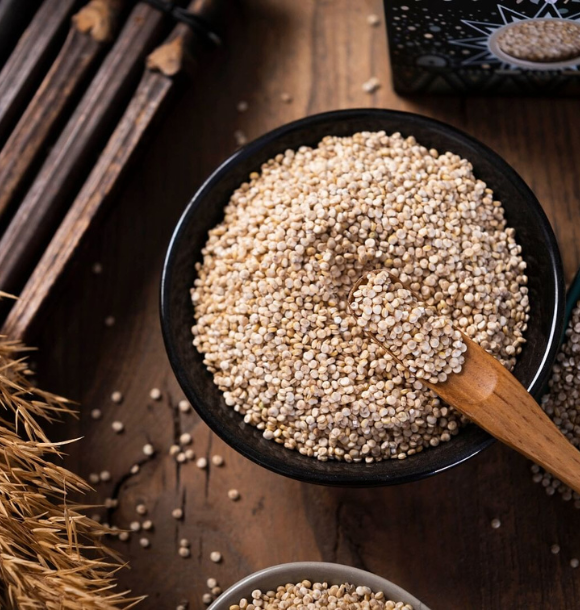
Photo Credits @quintaquinoa
Quinoa is a versatile and nutritious grain. It is a whole grain and is high in plant-based protein, fiber, and essential amino acids. Cooking quinoa is quick and easy, taking about 15-20 minutes. It can be boiled or steamed. Once cooked, quinoa has a fluffy texture and a slightly nutty flavor.
There are many ways to incorporate quinoa into meals. It can be used in salads, pilafs, stir-fries, or as a side dish. Its versatility makes it a great choice for adding variety to your diet.
Farro
Farro is a popular ancient grain known for its nutritional benefits and versatility in cooking. It is a type of wheat grain with a nutty flavor and chewy texture. The table below provides information about farro:
| Information | Description |
|---|---|
| Type | Farro is a type of wheat grain. |
| Nutritional Content | Farro is a good source of fiber, protein, and complex carbohydrates. It is also rich in vitamins and minerals such as iron, magnesium, and zinc. |
| Health Benefits | Farro supports digestion, manages blood sugar levels, promotes heart health, and aids in weight management due to its high fiber content. |
| Cooking Methods | Farro can be boiled, simmered, or cooked in a rice cooker. It is versatile and can be used in salads, soups, side dishes, or as a substitute for rice or pasta. |
| Availability | Farro can be found in health food stores, specialty grocery stores, and online. It is available in whole grain and semi-pearled varieties. |
| Storage | Store farro in a cool, dry place in an airtight container to maintain freshness. |
| Cautions | Sensitive individuals should consult a healthcare professional due to the potential gluten sensitivity or intolerance to farro, although rare. |
Amaranth
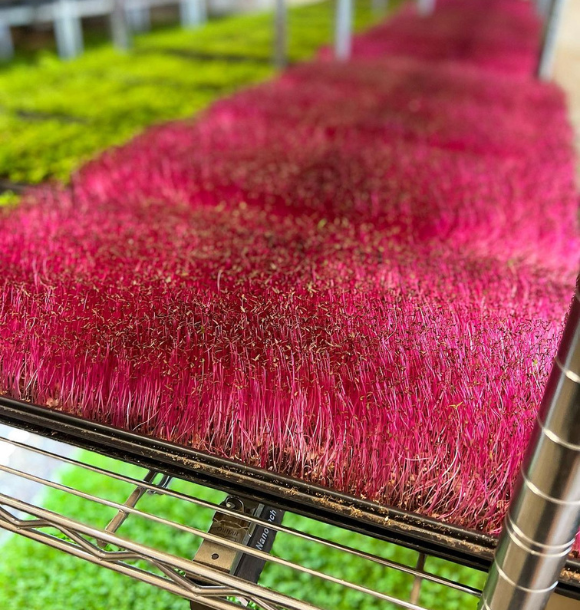
Photo Credits @microacres
Amaranth is a nutritious grain that offers health benefits. Consider the following points about amaranth:
– Nutritional powerhouse: Amaranth is rich in protein, fiber, calcium, iron, magnesium, and vitamin C. It contains all the essential amino acids, making it a complete protein source.
– Gluten-free option: Amaranth is naturally gluten-free, making it suitable for individuals with gluten sensitivities or celiac disease.
– Heart health: Amaranth benefits heart health with its high fiber content and heart-healthy nutrients like potassium and magnesium. It can help lower cholesterol levels and reduce the risk of heart disease.
– Blood sugar control: The soluble fiber in amaranth slows digestion and regulates blood sugar levels, which is beneficial for individuals with diabetes or those managing blood sugar levels.
– Antioxidant properties: Amaranth is rich in antioxidants, including vitamin C and vitamin E, which protect the body against free radicals and oxidative stress.
– Easy to incorporate: Amaranth is versatile and can be enjoyed as a side dish, in salads, soups, and even as a flour substitute in baking. Its nutty flavor makes it a great addition to any diet.
Remember to include amaranth regularly in your diet to enjoy its health benefits. Experiment with different recipes to find enjoyable ways to incorporate this nutritious grain into your meals.
Barley
Barley is a versatile and nutritious grain that offers many health benefits. Here is a table showing the nutritional content of barley:
| Nutrient | Amount per 100g |
|---|---|
| Calories | 354 |
| Carbohydrates | 73.5g |
| Protein | 12.5g |
| Fiber | 17.3g |
| Fat | 2.3g |
| Vitamin B6 | 0.4mg |
| Magnesium | 79mg |
| Iron | 2.5mg |
1. Barley is an excellent source of carbohydrates, providing 73.5g per 100g. These carbohydrates serve as a vital energy source.
2. It is also rich in dietary fiber, with 17.3g per 100g. Fiber aids digestion, promotes satiety, and helps maintain healthy blood sugar levels.
3. Barley contains 12.5g of protein per 100g, making it a great plant-based protein option for men.
4. The grain is low in fat, with only 2.3g per 100g, making it a healthy choice for those watching their fat intake.
5. Barley is a good source of essential vitamins and minerals. Vitamin B6 supports brain function and helps maintain a healthy nervous system. Magnesium plays a role in muscle and nerve function, while iron is essential for red blood cell production.
Including barley in your diet can be done in various ways, such as adding it to soups, stews, salads, or using it as a side dish. Its nutty flavor and chewy texture make it a delightful addition to any meal.
Millet
Millet is a nutritious grain that offers health benefits. It can enhance the nutritional value of meals. Here are some key points about millet:
- Millet is a gluten-free grain rich in nutrients.
- It is a good source of fiber, providing about 17% of the recommended daily intake per serving.
- Millet is also rich in antioxidants that help protect the body against oxidative stress and reduce the risk of chronic diseases.
- It is a good source of protein, containing about 6 grams per serving.
- Millet is a rich source of minerals such as magnesium, phosphorus, and manganese, important for bone health, energy production, and antioxidant function.
- This grain has a mild flavor and slightly nutty taste, making it a versatile ingredient in sweet and savory dishes.
- Millet can be used to make pilafs, salads, porridge, and baked goods.
- When cooking millet, the water to grain ratio is typically 2:1. Simmer for about 20 minutes or until the water is absorbed.
Including millet in your diet provides essential nutrients and adds diversity to meals. Whether as a side dish or a main ingredient, millet contributes to a healthy diet.
Teff
Teff is a versatile ancient grain with many health benefits. Here is a table listing key information about teff:
| Teff | Nutritional Benefits | Cooking Methods |
|---|---|---|
| Fiber-rich | Supports digestion and aids weight management | Boiling |
| High in Protein | Provides amino acids for muscle growth and repair | Steaming |
| Excellent source of Iron | Helps prevent iron deficiency anemia and supports oxygen transport | Baking |
| Gluten-free | Suitable for gluten sensitivities or celiac disease | Stir-frying |
| Rich in Calcium | Promotes healthy bones and teeth | Grilling |
| Contains Vitamin C | Boosts immune system and aids collagen production | Roasting |
| Versatile | Can be used in various dishes including porridge, bread, injera, and desserts | Sautéing |
Incorporating teff into your diet can boost overall well-being. Its fiber content supports digestion, while the high protein content aids muscle growth and repair. Teff provides essential iron for preventing anemia and proper oxygen transport. Being gluten-free, teff is suitable for those with gluten sensitivities or celiac disease.
To enjoy the nutritional benefits of teff, it can be cooked in different ways such as boiling, steaming, baking, stir-frying, grilling, or roasting. Its versatility allows you to use it in a variety of dishes, including porridge, bread, injera (a traditional Ethiopian flatbread), and desserts.
Remember to choose and store teff properly to maintain freshness and quality. When buying teff, look for packages without moisture or damage. Store it in an airtight container in a cool, dry place to prevent spoilage.
Nutritional Benefits of Gourmet Grains
Gourmet grains offer a multitude of nutritional benefits, making them an excellent and healthy addition to any diet. There are several key advantages to incorporating gourmet grains into your meals:
- High fiber content: Gourmet grains like quinoa, farro, and amaranth serve as exceptional sources of dietary fiber. This fiber aids digestion, regulates blood sugar levels, and promotes a feeling of fullness after consuming meals.
- Abundant in vitamins and minerals: Gourmet grains are packed with essential vitamins and minerals that support overall health. For instance, quinoa is rich in iron, magnesium, and B vitamins, while farro provides a good source of zinc, magnesium, and vitamin E.
- Antioxidant power: Numerous gourmet grains, such as barley and freekeh, are teeming with antioxidants. These compounds shield cells from damage caused by harmful free radicals, thereby reducing the risk of chronic diseases.
- Low glycemic index: Gourmet grains generally possess a low glycemic index (GI), which means they have a gradual and steady impact on blood sugar levels. This makes them a suitable choice for individuals managing diabetes or seeking to maintain stable energy levels throughout the day.
- Gluten-free alternatives: Some gourmet grains, including quinoa and amaranth, naturally lack gluten, making them an ideal choice for individuals with gluten sensitivities or celiac disease.
By incorporating gourmet grains into your diet, you can relish their nutritional benefits while introducing variety and flavor to your meals. Remember to opt for whole grains whenever possible and explore various recipes to uncover your favorite ways of savoring these nutritious staples.
What Nutrients Do Gourmet Grains Provide?
Gourmet grains provide essential nutrients for a healthy diet. These grains are packed with vitamins, minerals, and fiber that enhance overall well-being. Here is a table that shows the nutritional benefits of different gourmet grains:
| Gourmet Grain | Nutrients |
|---|---|
| Quinoa | Protein, Fiber, Iron |
| Farro | Protein, Fiber, Zinc |
| Amaranth | Protein, Fiber, Calcium |
| Barley | Fiber, Magnesium, Vitamin B6 |
| Millet | Protein, Fiber, Magnesium |
| Teff | Protein, Fiber, Calcium |
Gourmet grains have high protein content, making them suitable for vegetarians and vegans. They also contain fiber, which aids digestion and helps maintain healthy cholesterol levels. Gourmet grains provide minerals like iron, zinc, calcium, and magnesium, which support bone health, muscle function, and red blood cell production. Some grains, like quinoa and barley, are rich in vitamin B6, which is essential for brain function and neurotransmitter synthesis.
Incorporating gourmet grains into your diet ensures that your body receives necessary nutrients for optimal health. Whether you choose quinoa, farro, amaranth, barley, millet, or teff, these grains make a nutritious and wholesome addition to any meal.
How Can Gourmet Grains Benefit Men’s Health?
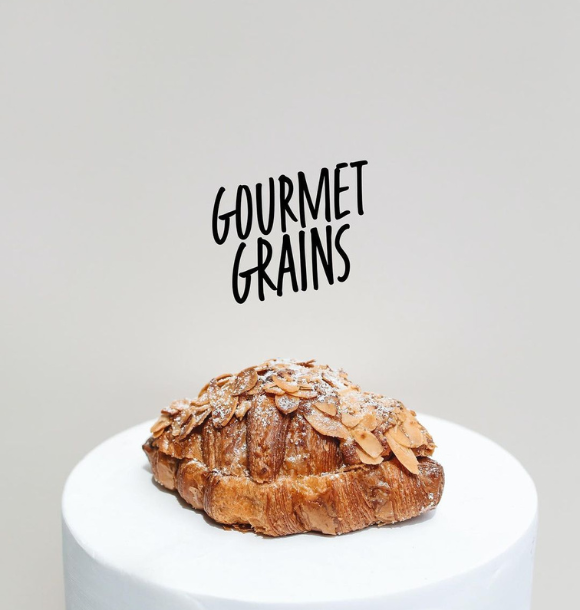
Photo Credits @kaaio.studio
Gourmet grains offer a range of benefits that contribute to men’s health. Incorporating these grains into your diet can have a positive impact in several ways:
- Heart Health Boost: Gourmet grains such as quinoa, farro, and barley are rich in fiber. This promotes lower cholesterol levels and reduces the risk of heart disease. The soluble fiber helps to regulate blood sugar.
- Weight Management Promotion: Gourmet grains are complex carbohydrates that digest slowly, providing a sense of fullness and preventing overeating. They also have a lower glycemic index, which stabilizes blood sugar, preventing energy crashes.
- Digestive Health Enhancement: The dietary fiber present in gourmet grains contributes to maintaining a healthy digestive system. This helps prevent constipation and supports regular bowel movements.
- Essential Nutrient Provision: Gourmet grains are a great source of vitamins, minerals, and antioxidants. Quinoa stands out as a complete protein and a good source of iron, while amaranth is particularly rich in calcium and magnesium.
- Muscle Recovery Support: Gourmet grains assist in replenishing glycogen stores in muscles after physical activity. This provides the energy needed for muscle recovery and contributes to repair.
- Reduction in Chronic Disease Risk: Including gourmet grains in a balanced diet can lower the risk of chronic diseases, such as type 2 diabetes, certain cancers, and obesity.
- Brain Health Support: Nutrients like magnesium, present in gourmet grains, are beneficial for brain health and cognitive function. These grains enhance mood, memory, and overall mental well-being.
By regularly incorporating a variety of gourmet grains into your diet, you can significantly improve your overall health as a man. Take advantage of the numerous benefits they offer.”
Incorporating Gourmet Grains into a Healthy Diet
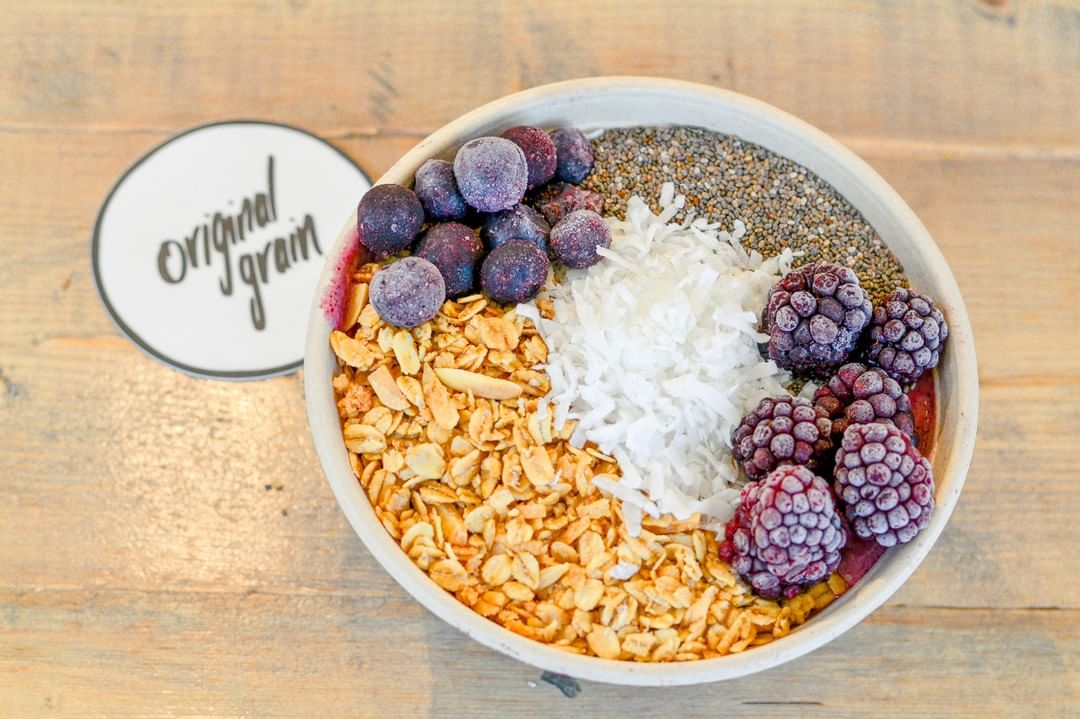
Photo Credits @originalgrainsters
Looking to add some healthy carbs to your diet? Say hello to gourmet grains! In this section, we’ll show you how to effortlessly incorporate these flavorful grains into your meals for a nutritious and delicious dining experience. Get ready for a mouthwatering journey as we share a collection of recipes that feature gourmet grains as their star ingredient. From hearty salads to wholesome bowls, these recipes will help you nourish your body while satisfying your taste buds. Get ready to elevate your meals with the goodness of gourmet grains!
Delicious and Nutritious Recipes with Gourmet Grains
Delicious and Nutritious Recipes with Gourmet Grains are a great addition to your healthy diet. Try these mouthwatering recipes:
- Quinoa Salad: Made with quinoa, vegetables, and herbs, this refreshing salad is high in protein and fiber. It takes about 30 minutes to prepare and serves 4 people.
- Farro Risotto: Indulge in a creamy and flavorful risotto using farro, mushrooms, and Parmesan cheese. It takes 45 minutes to cook and serves 2 people.
- Amaranth Porridge: Start your day with a nutritious and comforting amaranth porridge made with almond milk and topped with your favorite fruits. It only takes 20 minutes to prepare and serves 2 people.
- Barley Soup: Warm up with a hearty barley soup filled with vegetables and chicken broth. Cook it for an hour and enjoy 6 servings of this nourishing dish.
- Millet Stir-fry: Whip up a quick and flavorful stir-fry using millet, mixed vegetables, and soy sauce. It only takes 25 minutes to make and serves 3 people.
- Teff Pancakes: Treat yourself to delicious pancakes made with teff flour, buttermilk, and topped with fresh berries. These pancakes can be ready in just 30 minutes and serve 2 people.
These recipes showcase the versatility of gourmet grains and how they can be incorporated into various dishes to enhance both taste and nutrition. Give them a try and discover the delightful flavors of gourmet grains in your meals.
Tips for Buying and Cooking Gourmet Grains
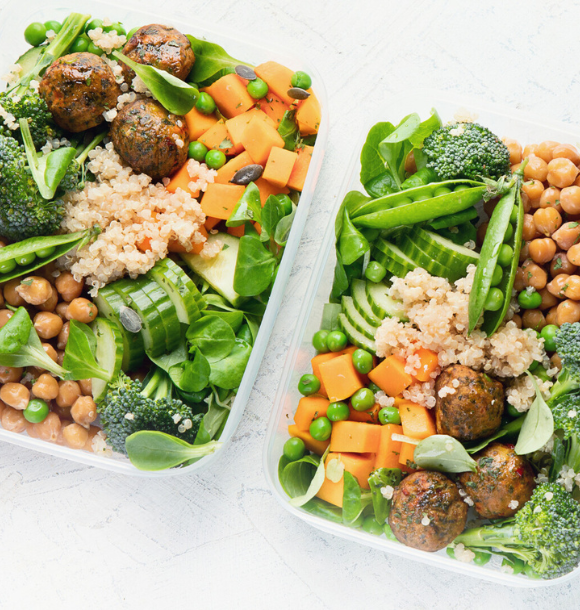
Photo Credits @quintaquinoa
When it comes to buying and cooking gourmet grains, there are some important tips you should keep in mind for the best results. Here are some things to consider:
1. Read the labels: It’s crucial to carefully read the labels when purchasing gourmet grains. Pay attention to the ingredients and nutritional value. Look for grains that are whole and minimally processed.
2. Choose organic: Whenever possible, opt for organic gourmet grains. This ensures that they are free from harmful pesticides and chemicals.
3. Look for quality and freshness: When selecting gourmet grains, make sure to check for signs of freshness. A pleasant aroma and vibrant color are good indicators. Avoid grains that appear dull or have a stale smell.
4. Consider cooking time: Different gourmet grains have varying cooking times. Take this into account when planning your meals to ensure that everything is cooked properly.
5. Experiment with flavors: Gourmet grains offer a wide range of flavors and textures. Try different varieties to discover your favorites and add variety to your meals.
6. Proper storage: To maintain the freshness of your gourmet grains, store them correctly. Use airtight containers and keep them in a cool, dry place away from sunlight and moisture.
7. Try different cooking methods: Explore various cooking techniques such as boiling, steaming, or sautéing when preparing gourmet grains. Experimenting with different methods can enhance their flavors.
8. Pair with complementary ingredients: Elevate the taste of gourmet grains by combining them with vegetables, herbs, spices, or proteins. This will help you create flavorful and nutritious dishes.
By following these tips for buying and cooking gourmet grains, you can indulge in delicious and healthy meals that are bursting with flavor and nutritional benefits.
How to Choose and Store Gourmet Grains?
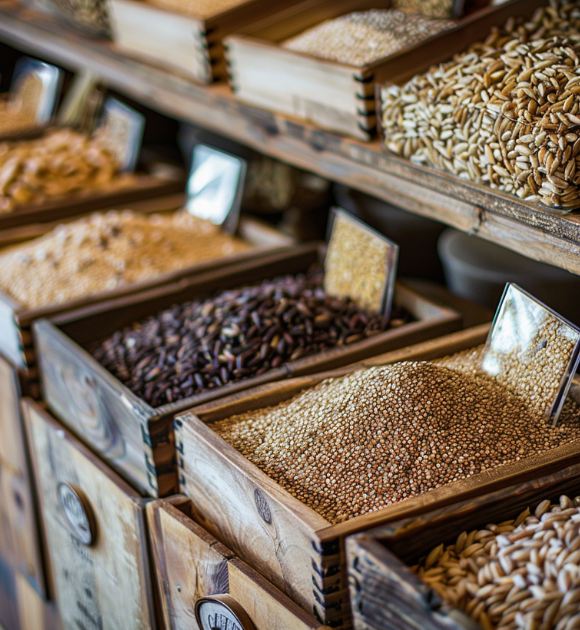
When it comes to choosing and storing gourmet grains, there are a few key steps to keep in mind. First and foremost, it’s important to prioritize freshness. Take a close look at the packaging or labeling to ensure that the grains are fresh. Opt for grains with a long shelf life or those stored in airtight containers.
Reading the labels is also crucial. Pay attention to expiration dates, cooking instructions, and storage requirements. This information will help you make informed decisions and ensure that the grains stay at their best for as long as possible.
Proper storage containers are another important aspect. Transfer the grains to airtight containers such as glass jars or resealable bags. This will help maintain their freshness and protect them from any potential contaminants.
In terms of storage location, it’s best to keep gourmet grains in a cool and dry place. Sunlight and heat can have a negative impact on their quality, so a pantry or cupboard is an ideal spot.
To ensure that you’re always using the freshest grains, it’s a good idea to rotate your stock. Use older grains first and consistently replenish your supply to maintain freshness.
Take steps to prevent moisture and pests from compromising the grains. Make sure they are completely dry before storage and take necessary precautions against pests.
By following these simple yet effective steps, you can confidently choose and store gourmet grains, keeping them fresh and high quality for longer periods of time.
What Cooking Methods Can Be Used for Gourmet Grains?
When it comes to cooking gourmet grains, there are several methods you can use. Here is a table outlining the cooking methods for gourmet grains:
| Method | Description |
| Boiling | Gourmet grains like quinoa, farro, barley, and amaranth can be boiled in water or broth to soften them. |
| Steaming | Steaming is a gentle method that retains the texture and nutrients of gourmet grains like teff and millet. |
| Sautéing | Sautéing grains like quinoa and farro in oil or butter adds a nutty flavor and enhances their taste. |
| Roasting | Roasting barley or amaranth creates a delicious and crunchy texture. Simply spread the grains on a baking sheet and roast them in the oven until golden brown. |
| Pressure cooking | A pressure cooker is a quick and efficient way to cook gourmet grains, reducing cooking time and softening the grains. |
Using these cooking methods brings out the unique flavors and textures of gourmet grains. Experimenting with different methods allows you to incorporate these healthy carbs into your meals. So, consider boiling, steaming, sautéing, roasting, or pressure cooking gourmet grains to elevate your dishes and enhance your culinary experience.
Frequently Asked Questions
What are unprocessed carbs?
Unprocessed carbs refer to foods that are comprised entirely of whole grains and have not undergone heavy processing. These carbs include plain full flake or steel-cut oats, amaranth, quinoa, millet, wheat berries, barley, and wild rice.
What are the benefits of unprocessed carbs?
Unprocessed carbs, which are whole grains, offer several health benefits. They contain the bran, germ, and endosperm, each of which contains important nutrients. These carbs help maintain steady blood sugar levels, lower cholesterol, prevent the formation of blood clots, and may protect against certain cancers. They also contribute to digestive health by preventing constipation and diverticular disease.
Are whole grain products labeled as “whole grain” always healthy?
Not necessarily. Some foods labeled as “whole grain” may not be healthy as they can contain very little whole grain and be heavily processed. An example of this is some store-bought whole wheat bread. It’s important to read ingredient labels and ensure that the product is comprised entirely of whole grains and does not have a small amount of processed grains added.
How much whole grain should I consume daily?
The 2015-2020 Dietary Guidelines for Americans recommend consuming 6 ounces of grain foods daily, with at least half of that intake coming from 100% whole grains. Due to research showing the health benefits of whole grains and the potential negative effects of refined grains, it is recommended to choose mostly whole grains.
Can I consume gluten-containing whole grains?
Yes, most people can consume gluten without adverse effects. While some grains contain gluten, such as farro and spelt, there is limited research supporting claims against its inclusion in a healthy diet. It’s important to consider individual dietary needs and sensitivities when choosing whole grains.
What are some examples of ancient grains?
Ancient grains are high in fiber and heart-healthy. Some examples include quinoa, teff, freekeh, farro, and spelt. These grains offer various flavors and textures and can be cooked in different ways to incorporate them into your meals.
